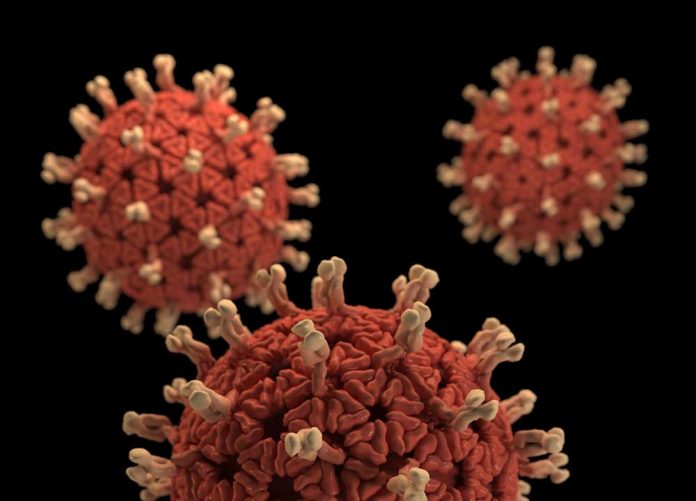Coronaviruses are RNA virusi belonging to coronaviridae family. These virusi display remarkably high rates of errors during replication due to lack of proofreading nuclease activity of their polymerases. In other organisms, the replication errors are corrected but the coronaviruses lack this ability. As a result, replication errors in coronaviruses remain uncorrected and accumulate which in turn act as source of variation and adaptation in these virusi. Thus, it has always been nature of things for the coronaviruses to undergo mutation in their genomes at extremely high rates; more the transmission, more replication errors happen and hence more mutations in the genome leading to more lahaja kwa hiyo.
Ni wazi, kubadilisha hadi mpya lahaja is not new to virusi vya Korona. Binadamu virusi vya Korona have been building up mutations to new forms in the recent history. There were several lahaja responsible for various epidemics since 1966, when the first episode was recorded.
The SARS-CoV was the first lethal variant that caused coronavirus epidemic in Guangdong Province of China in 2002. MERS-CoV was the next important variant that caused epidemic in Saudi Arabia in 2012.
Riwaya coronavirus SARS-CoV-2, the variant responsible for the current COVID-19 pandemic that started in December 2019 in Wuhan, China and subsequently spread worldwide to become the first coronavirus pandemic in the human history, has continuously undergone further adaptation accumulating mutations in different geographical regions giving rise to several sub-lahaja. These sub-lahaja have minor differences in their genome and the spike proteins and show differences in their transmission rate, virulence and immune escape infectivity.
Based on the threat that these sub-variants pose, they are grouped into three categories – Variants of concern (VOC), Variants of interest or Variants under investigation (VOI) and Variants under monitoring. This grouping of sub-variants is based on evidences related to transmissibility, immunity and severity of infection.
- Lahaja za wasiwasi (VOC)
Lahaja za wasiwasi (VOC) zina uhusiano wa wazi na ongezeko la uambukizaji au virusi au kupungua kwa ufanisi wa hatua zozote za afya ya umma kama vile ufanisi wa chanjo ambazo zinatumika sasa.
| Lebo ya WHO | Nasaba | Nchi iligunduliwa kwanza (jumuiya) | Mwaka na mwezi iligunduliwa kwanza |
| Alpha | B. 1.1.7 | Uingereza | Septemba 2020 |
| beta | B. 1.351 | Africa Kusini | Septemba 2020 |
| Gamma | P.1 | Brazil | Desemba 2020 |
| Delta | B. 1.617.2 | India | Desemba 2020 |
- Lahaja za maslahi au Lahaja zinazochunguzwa (VOI)
Vibadala vya vivutio au vibadala vinavyochunguzwa (VOI) vinajulikana kuwa na mabadiliko ya kijeni ambayo yanaweza kuathiri uambukizaji, uharibifu au ufanisi wake wa hatua za afya ya umma na hutambuliwa kusababisha maambukizi makubwa ya jamii.
| Lebo ya WHO | Nasaba | Nchi iligunduliwa kwanza (jumuiya) | Mwaka na mwezi iligunduliwa kwanza |
| Eta | B. 1.525 | Nigeria | Desemba 2020 |
| Iota | B. 1.526 | USA | Novemba 2020 |
| Kappa | B. 1.617.1 | India | Desemba 2020 |
| Lambda | C.37 | Peru | Desemba 2020 |
- Lahaja chini ya ufuatiliaji
Vibadala vinavyofuatiliwa vinatambuliwa kama ishara na kuna dalili kwamba vinaweza kuwa na sifa sawa na VOC lakini ushahidi unaweza kuwa dhaifu. Kwa hivyo, anuwai hizi hufuatiliwa kila wakati kwa mabadiliko yoyote.
| Lebo ya WHO | Nasaba | Nchi iligunduliwa kwanza (jumuiya) | Mwaka na mwezi iligunduliwa kwanza |
| B. 1.617.3 | India | Februari 2021 | |
| A.23.1+E484K | Uingereza | Desemba 2020 | |
| Lambda | C.37 | Peru | Desemba 2020 |
| B.1.351+P384L | Africa Kusini | Desemba 2020 | |
| B.1.1.7+L452R | Uingereza | Januari 2021 | |
| B.1.1.7+S494P | Uingereza | Januari 2021 | |
| C.36+L452R | Misri | Desemba 2020 | |
| AT.1 | Russia | Januari 2021 | |
| Iota | B. 1.526 | USA | Desemba 2020 |
| Zeta | P.2 | Brazil | Januari 2021 |
| 1 | Uingereza | Machi 2021 | |
| P.1+P681H | Italia | Februari 2021 | |
| B.1.671.2 + K417N | Uingereza | Juni 2021 |
Upangaji huu unabadilika kumaanisha kwamba vibadala vidogo vinaweza kuondolewa kutoka kwa kundi moja au kujumuishwa katika kundi lolote kulingana na mabadiliko katika tathmini ya vitisho katika suala la uambukizaji, kinga na ukali wa maambukizi.
Ironically, evolution of SAR-CoV-2 currently seems to be ongoing process. Going by the nature of this virusi, so long there is transmission among humans there will be replication errors and mutations. Some mutant or variant may overcome the selection pressure to become more infectious and virulent or escape immune response to make vaccine less effective. Possibly, many more variants will be detected in due course in the regions of higher transmission. Minimising transmission and constant monitoring are the key to containment strategies.
***
Vyanzo:
- Prasad U., 2021. New Strains of SARS-CoV-2 (the virusi responsible for COVID-19): Could ‘Neutralising Antibodies’ Approach be Answer to Rapid Mutation? Scientific European. Posted 23 December 2020. Available online at http://scientificeuropean.co.uk/medicine/new-strains-of-sars-cov-2-the-virus-responsible-for-covid-19-could-neutralising-antibodies-approach-be-answer-to-rapid-mutation/
- WHO, 2021. Inafuatilia vibadala vya SARS-CoV-2. Inapatikana mtandaoni kwa https://www.who.int/en/activities/tracking-SARS-CoV-2-variants/
- ECDPC 2021. Vibadala vya SARS-CoV-2 vinavyohusika kufikia tarehe 8 Julai 2021. Inapatikana mtandaoni kwenye https://www.ecdc.europa.eu/en/covid-19/variants-concern
***






































